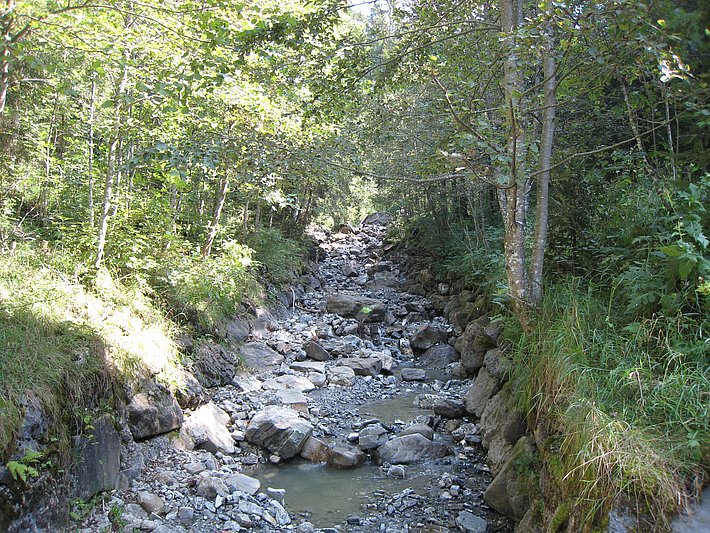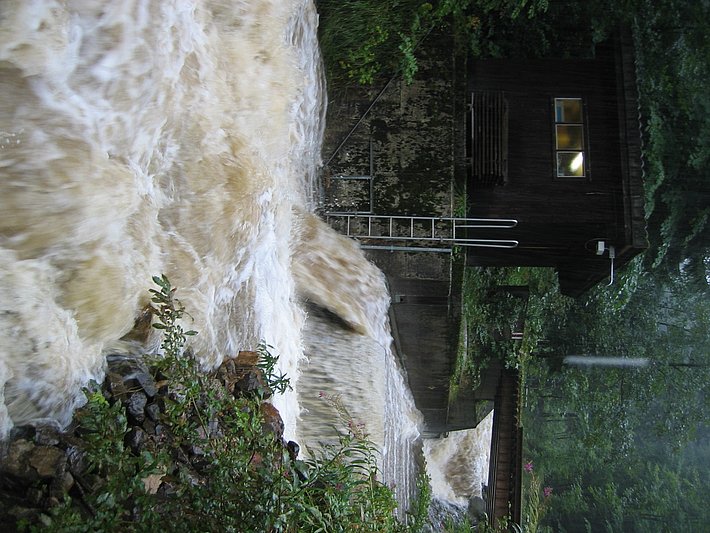
Bedload transport measurements at the Erlenbach ¶
In the Erlenbach bedload transport has been monitored since 1982. With more than 20 years of data this is one of the longest time series of observations worldwide. Long-term measurements of sediment transport such as this are rare and very valuable.
The following measurements are conducted on a regular basis:
- In 1982 a retention basin was built. The deposited sediment volumes are surveyed at least once a year.
- Since 1986 indirect sensors record the acoustic noise of moving particles, using the Swiss plate geophone system. Sediment transport rates can be inferred from these measurements. The sensors record at high temporal resolution (1 minute) and are basically maintenance free. PBIS sensors were used until 2000, and geophone sensors from 2002 onwards.
- In 2008 automatic basket samplers were installed at the check dam upstream of the retention basin. These allow to take bedload samples at specific times to analyse grain size properties and for the detailed comparison with the geophone signals.
- Intermittently tracer studies with tagged stones are conducted in the catchment.
In the meantime the Swiss plate geophone (SPG) has been installed at more than 20 field sites (primarily in the European Alps), and direct bedload samples were collected at many of these sites. This measuring technique has been successfully calibrated for total bedload flux at several field sites. In addition, a method has been developed to determine bedload transport by grain size classes, based on a detailed analysis of the field measurements at the Erlenbach, including records of the full raw geophone signal. To further develop bedload surrogate acoustic measuring systems, parallel measurements are now performed in the Erlenbach using other, similar measuring techniques. Upstream of the traditional geophone impact plates, a miniplate accelerometer (MPA) system was installed, using smaller plates and accelerometer sensors. At the downstream end of the large check dam, a Japanese pipe microphone (JPM) was installed, recording the sound of particles transmitted in the interior of the pipe.
Photos sediment research ¶
![[Translate to Englisch:] Erlenbach Miniplate 20160630 02 red Erlenbach. Image: WSL](/fileadmin/_processed_/f/1/csm_Erlenbach_Miniplate_20160630_02_red_a0b229c7a5.jpg)



